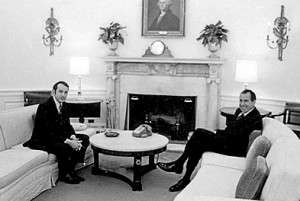In police drama, the protagonists’ surveillance and investigation of the fictional world, and their ability to enforce the law, depend on being able to move in and between places and spaces. A few years ago I wrote about ideas around seeing and knowing in relation to US police series, and working on the current AHRC-funded research project ‘Spaces of Television’ has got me thinking about space and movement in British police shows. Having been interested in both cars and television for most of my life, police cars have been a starting-point for moving towards such an analysis and led to a recent conference paper on this topic. Here, I will offer some necessarily condensed and limited ways of dividing up the issues around cars and space.
Extension in Space; Condensation of Time
The car has functional significance as a means to move between places; to attend a crime scene, meet a witness or locate a perpetrator. In this role, travel by car is often a brief ellipse between two connected narrative sequences. In three stills here, detectives arrive at a crime scene. One is ITV1’s Midsomer Murders, with John Nettles as Inspector Barnaby in his Rover. John Thaw as Inspector Morse arrives in his Jaguar in the eponymous ITV series, and Sam Tyler at the start of BBC’s Life On Mars arrives in another Rover. Cars offer spatial and temporal extension and condensation; in the story-world they minimize temporal and spatial delays or intervals, and in the narration they are a connective tissue or articulating joint between sequences set in different times and places.

Midsomer Murders: Rover
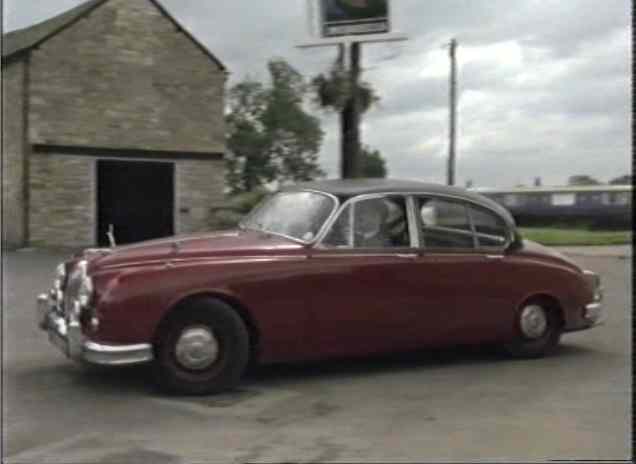
Morse: Jaguar

Life on Mars: Rover Now
Exterior/Interior Space: The Car as Studio
Secondly, a journey by car can form a narrative segment in itself, and here the car functions as a kind of mobile TV studio, in which character interaction is constrained spatially and thus gains dramatic intensity. The conception of the uniformed police as a motorized force was introduced prominently in the BBC’s Z Cars, and the programme title referred to the radio call signs (e.g., Z-Victor 1) used by Lancashire police for the cars equipped with radios that policed large conurbations. Radio cars were a response to the problem of how to understand and control extensive spaces. But although exterior filming was important to Z Cars’ realist tone in the 1960s, in-car scenes were shot on live video in the studio with back projected street scenes behind them. Extended dialogue scenes while the officers were driving could explore their relationships with each other and also signify the mobility and scope of the narrative action made possible by radio. Spatial extension was matched dramatically by spatial restriction.
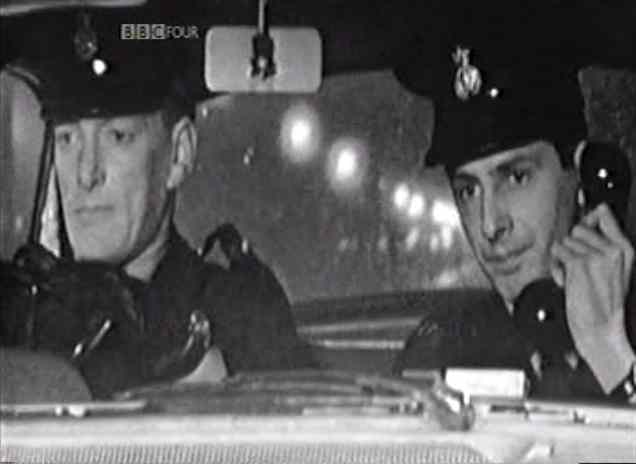
Z Cars: In Car
Cars on Film: Action Vehicles
In the broad historical movement from studio-based shooting to location shooting, cars gradually took on a changed narrative role. They became the focus of action sequences in real space. In the 1970s, 16 mm cameras were light and robust enough to fit onto rigs on car doors, leading to extended sequences of shots like the one here from The Sweeney, where all-film production integrates the interior of the car into a contiguous and continuous exterior space. Shooting on film for interiors, exteriors and in-car sequences blurred the boundaries between physical action and dialogue-centred dramatic modes.
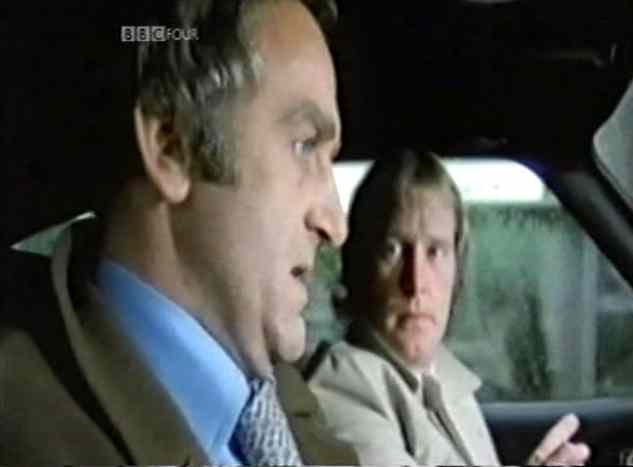
The Sweeney in Car
Car Iconographies
Each car is an iconographic resource, and its role in drama is carved out through its relationships with characters and settings. Inspector Morse’s vintage Jaguar Mark II matched the character’s upper-middle class tastes for opera, real ale and cryptic crosswords, and contrasted with the modern Ford Sierra seen here driven by Morse’s subordinate Lewis.
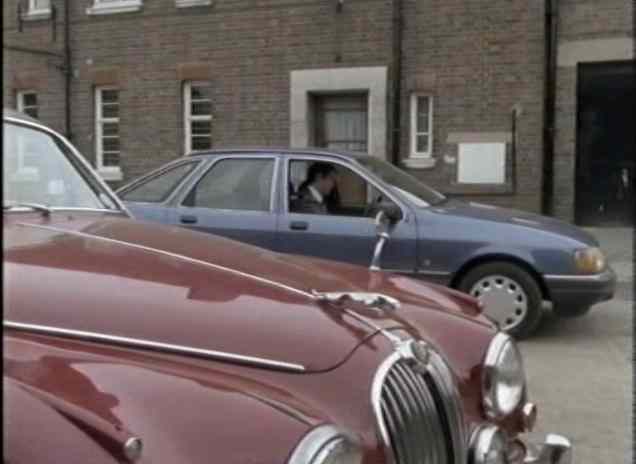
Inspector Morse’s Jaguar vs. Lewis’ Ford Sierra
The Channel Island tax haven settings of Bergerac reduced the incongruity of the lead character’s vintage Triumph Roadster. Brenda Blethyn as Vera in ITV1’s current detective series drives a shabby Land Rover that matches her own disheveled appearance and the series’ setting in a bleak Northumbria.

Bergerac: Triumph Roadster

Vera: Landrover
Car iconography is especially interesting in drama set in the past; Inspector George Gently’s Rover P5 is a solid, white-collar vehicle that suits the 1960s setting carefully recreated in the series. But it belies Gently’s progressive outlook, one that contrasts with his sidekick John Baccus’s lack of the expected youthful liberalism signified by Baccus’s MG sports car. The cars are a ruse that viewers learn to see through.

Inspector George Gently’s Rover P5
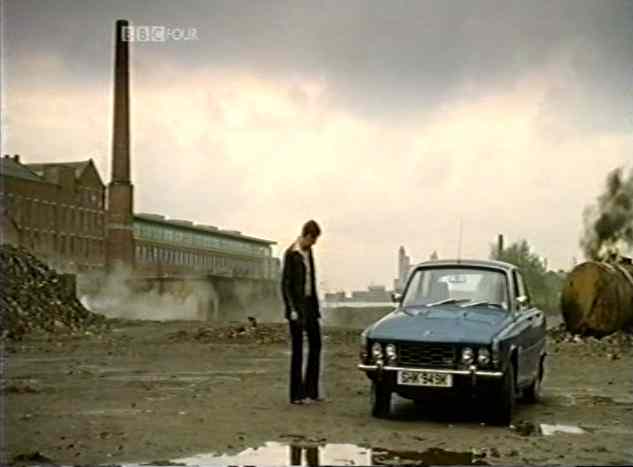
Life on Mars: Tyler Wakes Up
Sam Tyler arrives at a crime scene in the first episode of Life On Mars in a modern Rover. When Tyler wakes up in 1973, the first thing he sees is another Rover, a 2000TC, and the substituted car links and separates the chronological periods. Tyler’s 1973 boss Gene Hunt demonstrates his machoism through his top of the range Ford Cortina Mark III GXL, and in the sequel, Ashes to Ashes, Hunt’s Audi Quattro signifies the excess and brashness of the Tory 1980s. It did this so effectively that in 2010 it appeared in election posters for both the Conservative and Labour parties. They debated the legacy of the 1980s, contesting the decade’s meanings via Hunt’s character as signified by his totemic car.

Life on Mars: Ford Cortina

Ashes to Ashes: Audi Quattro
I think the role of the car can be analysed in at least the four ways that I have suggested here, against an historical background of changing production circumstances (broadly, from studio-based programmes to location-based ones) and differences of genre (such as character-focused dramas versus action-focused ones). Cars signify performatively in police drama; carrying meaning and driving the narrative, and tracing their different roles is a way into the textual, historical and cultural work of television.
Jonathan Bignell is Professor of Television and Film at the University of Reading. He leads the AHRC research project ‘Spaces of Television: production, site and style’ which is a collaboration with colleagues at Reading, Leicester and Glamorgan universities. Some of his work, including writing on police drama, is now available freely online under Open Access agreements. He is currently working on a book about visual style in TV science fiction, and editing (with Stephen Lacey) a new edition of British Television Drama: Past, Present and Future.




